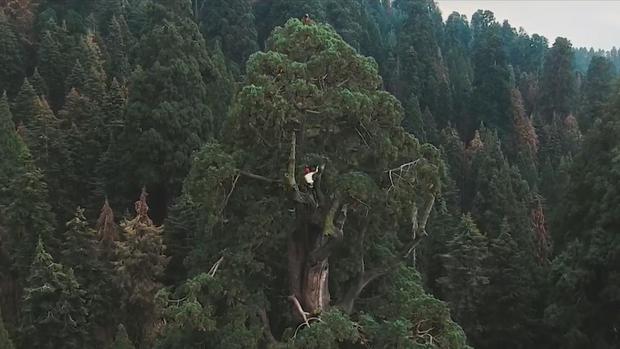California redwoods suffer from effects of climate change-fueled weather whiplash
At hundreds to thousands of years old, California's iconic redwoods -- the tallest trees in the world -- have truly stood the test of time. But all of our atmospheric river storms have left them with a case of weather whiplash in this age of climate change.
Todd Dawson is one of the only researchers in the world to explore an ecosystem few of us have ever seen up close before; he and his team are expert tree climbers, conducting research at the tops of the redwoods more than 200 feet high.
"Climbing the redwoods has been a really special part of the research that we do," said Dawson. "It's really hard to understand an organism that's that big and that long-lived until you get up into the trees themselves."
Dawson, a professor of integrative biology and environmental science policy & management at UC Berkeley, said the weather extremes are taking a toll on California's official state trees.
Dawson said coast redwoods and giant sequoias are now dealing with weather whiplash. While this winter's powerful atmospheric river storms brought a lot of beneficial rainfall to the redwoods, the storms also brought high winds which toppled some of these century-old trees.
Before these strong storms, they were up against another extreme: years of dangerous drought and ravaging wildfires.
"This is a new norm and seems like we're going into much more extreme weather," said Dawson. "We get these extremely wet and very windy times and then we go into drought for a whole bunch of years, and I think those are really challenging the native vegetation including the redwoods throughout the state."
UC Berkeley physics major Elvis Liu sits in nature every day to de-stress among these massive trees.
"And I think there's a big difference between the trees you plant artificially, and the ancient woods that have been here forever," said Liu. "And in our effort to protect the trees, it makes more sense to preserve the existing ones instead of just planting new ones."
"I think that what we're going to see happen to the redwood forest, and we're already seeing signs of it already is the ranges are going to contract," said Dawson.
In the 2020 lightning-sparked Castle Fire, 7,500 to 10,600 large giant sequoias were killed in the Sequoia National Forest and Sequoia National Park in the Sierra Nevada.
Redwoods have survived wildfires and drought for centuries until now. Experts said decades of fire suppression combined with devastating drought and hotter temperatures have turned overgrown forests into highly flammable fuels. This has led to an ever-increasing intensity of wildfires unlike anything we've seen before, too much for even the redwoods to withstand.
For Dawson, protecting these ancient trees is more important than ever.





